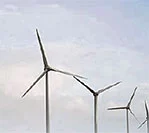THE revolution of global energy system is seen as one of mankind’s greatest achievements. Without energy, be it in the form of light, heat or electrical energy, we lose the ability to do work. In the medieval period, the main energy sources were firewood, charcoal and human muscle.
The energy system from coal combustion developed since the Industrial Revolution in 1760. Coal’s share in generating power rose from merely 10 per cent in 1560 to 93 per cent in 1860. This energy demand has sparked myriad changes of the ecosphere, involving a deep transformation of both economic-ecological and socio-technical equilibria.
Our contemporary industrial metabolism today is driven by a mix of fossil fuel resources and renewable energy. At such a unique fashion, why and how did the energy transition occur?
Along with looming shortages of energy reserves, geopolitical conflicts, large-scale environmental degradation and climate change, the conventional energy systems are at a crossroads. The challenges remain to ensure sustainable and reliable energy supply to cope with soaring energy demand.
Globally, its repercussions are spelling out the urgency of transitioning to sustainable energy systems within the next 10 to 20 years. In Denmark, change in energy system is seen from the rise in the overall annual share of wind power in the electricity mix from under one per cent in 1980 to 33 per cent last year. Following the Fukushima nuclear power plant accident in 2011, the energy transition policy package in Germany rigorously calls for all nuclear power plants to be phased out by 2022.
The Indian government has pledged a transition to a low carbon economy of which solar power may provide 35 to 40 per cent of future energy demand.
The dominant goal of economic growth in politics renders an energy transition puzzle and dilemma not only in Malaysia but in many developing countries. This is due to the imperative nexus of energy consumption and economic growth. With such high priority given to economic development and addressing social equity, attributed to population growth, processes of urbanisation and industrialisation, low growth arguably is unacceptable. Without the tapping of fossil resources to fuel and drive economic activities, the economy will eventually stall.
Our present mode of generating, distributing, and consuming energy has made it the largest business in Malaysia — contributing to 20 per cent of the GDP (only oil and gas sector). Owing to this, it is no surprise that the view of transitioning to sustainable energy is invariably contested by interested parties.
The persistent role of existing established industry coalition and countervailing energy regime create resistance to transition. As such, this deep lock-in situation fails to mobilise the necessary willpower and resources to form any breakthroughs in industrial niche development.
Also, breaking fossil fuel dependence is environmentally rational but simply lacks economic logic to many. Sustainable energy system has fundamentally lower energy returns on energy investment than fossil fuels and, therefore, appears unattractive to consumers, financial and industrial investors. This lack of competitiveness further impedes its diffusion.
By 2020, Malaysia targets to become a high-income country, of which knowledge, technology, entrepreneurship, and innovation will be key elements to economic growth. Our unprecedented growth will come with societal, environmental and political externalities that are not monetised. How do we navigate the new direction to ensure sustainability and quality of growth?
Questions raised here are how to bridge the “unfamiliarity gap” of the transitional pathway and how to understand and address trade-offs across sectors.
The need to open doors for constructive discussion on pragmatic steps on how to balance the mutuality of interest across society and economy is pressing.
More importantly, are both short-term objectives and the long-term perspective thoughtfully weighed? The uncertainty of transitioning to “which” of the sustainable energy alternatives will thrive. Their capability to compete with the conventional system will highly depend on the readiness of all players to absorb the policy risks and bear the long-term cost.
Our utmost dilemma is to leverage between long-term benefits and transition needs on one side and transition costs and risks to different industries on the other.
The soaring energy demand globally calls for a transition to sustainable energy systems such as wind turbines and solar power in the next 10 to 20 years.
energy demand globally calls for a transition to sustainable energy systems such as wind turbines and solar power in the next 10 to 20 years
Article by Michelle Kwa which appeared in New Straits Times, 17 June 2014.





